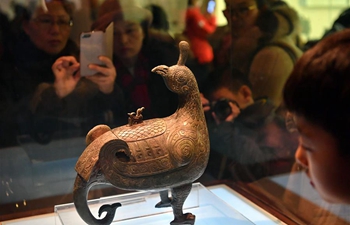BEIJING, Feb. 9 (Xinhua) -- A recent study shows that more than 30,000 cases of infectious diseases were imported to the Chinese mainland from 2005 to 2016, and the types of imported infectious diseases increased from two in 2005 to 11 in 2016.
The study, conducted by researchers from the Chinese Center for Disease Control and Prevention and other Chinese research institutions, collected and analyzed data related to imported infectious diseases from China's National Information Reporting System of Infectious Diseases.
A total of 31,470 cases of infectious diseases were imported to the Chinese mainland from 2005 to 2016, and the cases were imported mainly from Africa and Asia.
The study was published in the January issue of the U.S. journal Emerging Infectious Diseases.
According to the China Statistical Yearbook, the number of inbound tourists from Africa grew from 238,000 in 2005 to 589,000 in 2016, and the number of inbound tourists from Asia grew from 12.5 million in 2005 to 18 million in 2016.
Some infectious diseases have been re-emerging, such as epidemic hemorrhagic fever and malaria, which previously had been under control, and wild poliovirus that had previously been eliminated in China in 2000.
In 2011, an outbreak of wild poliovirus infection was reported in the Xinjiang Uygur Autonomous Region. A few emerging infectious diseases, such as the Middle East respiratory syndrome, yellow fever and the Zika virus, were also reported in China.
The study found a seasonal distribution of imported infectious diseases. Most yellow fever cases were imported in March. There is usually a higher incidence of imported malaria from April to August, reaching a peak in May and June.
All the Japanese encephalitis cases were imported from June to September, whereas the incidence of imported dengue fever usually peaks in October. The cases of Zika were imported mainly through international airports around major festival events, such as the Spring Festival, the Mid-Autumn Festival and National Day.
Information about the imported infectious diseases is believed to be of value for helping with drafting policies for public health.

















